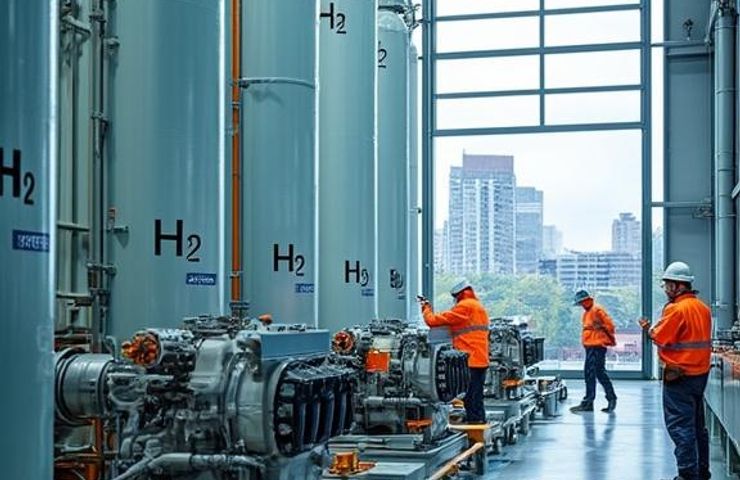
Hydrogen Internal Combustion Engine Center Powers Ahead in Gothenburg
July 28, 2025Johnson Matthey, known for its work in emissions control and clean energy, is making a bold move in the world of hydrogen mobility. By the middle of 2025, they’re set to open one of Europe’s top-tier hydrogen combustion engine testing facilities right in Gothenburg, Sweden—a city that’s no stranger to innovation in the auto and clean-tech space.
Why Hydrogen Engines—and Why Now?
With all the buzz around electric vehicles these days, it’s easy to overlook hydrogen internal combustion engines (H₂ICE). But here’s the twist—they’re not yesterday’s news, especially when you zoom in on heavy-duty transport. For trucks and machinery, where EVs struggle with things like battery weight and charging logistics, hydrogen engines offer a real-world alternative.
That’s exactly where Johnson Matthey’s new Gothenburg site comes in. The facility is built to handle testing for engines up to 600 kW (about 800 horsepower), and it’s not just about engines—it’ll be a one-stop shop for testing hydrogen safety systems, emissions, catalyst performance, and more. It’s the kind of setup that lets engineers tweak, test, and evolve combustion tech for a cleaner future—without starting from scratch.
Project Brunel: Laying the Groundwork
This cutting-edge test center didn’t just pop up overnight. It’s the next chapter following Project Brunel, a collaboration between Johnson Matthey, Cummins, PHINIA, and Zircotec. Since late 2021, this team has been fine-tuning hydrogen combustion systems to boost efficiency and cut emissions—and it’s been paying off.
Cummins brought deep engine knowledge; PHINIA provided top-tier fuel systems; and Zircotec‘s thermal tech kept everything cool under pressure. The Gothenburg facility is essentially leveling up that partnership, turning those R&D wins into scalable tech solutions.
So, Why Gothenburg?
Gothenburg isn’t just a dot on a map—it’s a true player in the green mobility game. With a smart industrial ecosystem and policies that back innovation, it makes perfect sense as the home of this project. Legacy automakers, ambitious clean-tech firms, and a real appetite for forward-thinking ideas—it all adds up.
Plus, this kind of facility supports industrial decarbonization across Sweden and the EU. It’s not just about engines—it’s about jobs, industrial growth, and leading the charge toward a more sustainable energy future.
What Makes This Facility Stand Out?
What really sets this place apart is its whole-system mindset. Instead of testing parts in isolation, it simulates how everything works together—from hydrogen storage and fuel delivery to emissions management and safety. It’s a comprehensive, real-world approach in an industry that’s often too focused on siloed solutions.
We’re talking pressurized hydrogen systems up to 500 bar, advanced sensors, flow meters, and safety protocols that allow engineers to push the limits without cutting corners. That kind of deep integration doesn’t just look good on paper—it’s what will actually drive zero-emission technology into real-world fleets.
From Consortium to Real-World Collaboration
This move also helps strengthen Johnson Matthey’s spot at the table when it comes to shaping hydrogen’s role across Europe. As a founding member of the Global Hydrogen Mobility Alliance, they’re not just participating in the energy transition—they’re helping write the playbook.
The best part? They’re not doing it alone. By working side-by-side with PHINIA, Cummins, and Zircotec, JM is helping to bridge the gaps in our current clean tech landscape. They’re championing hydrogen combustion engine solutions in a world that too often sees just batteries or fuel cells as the only paths forward.
What It All Means for the Market
Sure, battery-powered vehicles are gaining ground, but one size doesn’t fit all. For heavy-duty industries—whether it’s freight, construction, or marine—batteries alone might not cut it. That’s where hydrogen combustion steps in, offering rugged, familiar technology with a clean edge.
By backing this sector with real investment, Johnson Matthey is putting a much-needed spotlight on hydrogen mobility. This isn’t a side bet—it’s a powerful complement to other sustainable energy solutions, and one that taps into decades’ worth of engine know-how instead of throwing it all away.
Looking Down the Road
Fast forward to autumn 2025: engines will be revving, data will be rolling in, and the future of hydrogen combustion engines will be closer than ever. Johnson Matthey is making it clear—hydrogen innovation isn’t limited to fuel cells or electrolysis labs. It’s happening inside reimagined combustion engines too, with serious horsepower and a clear mission to change the game.



 With over 15 years of reporting hydrogen news, we are your premier source for the latest updates and insights in hydrogen and renewable energy.
With over 15 years of reporting hydrogen news, we are your premier source for the latest updates and insights in hydrogen and renewable energy.